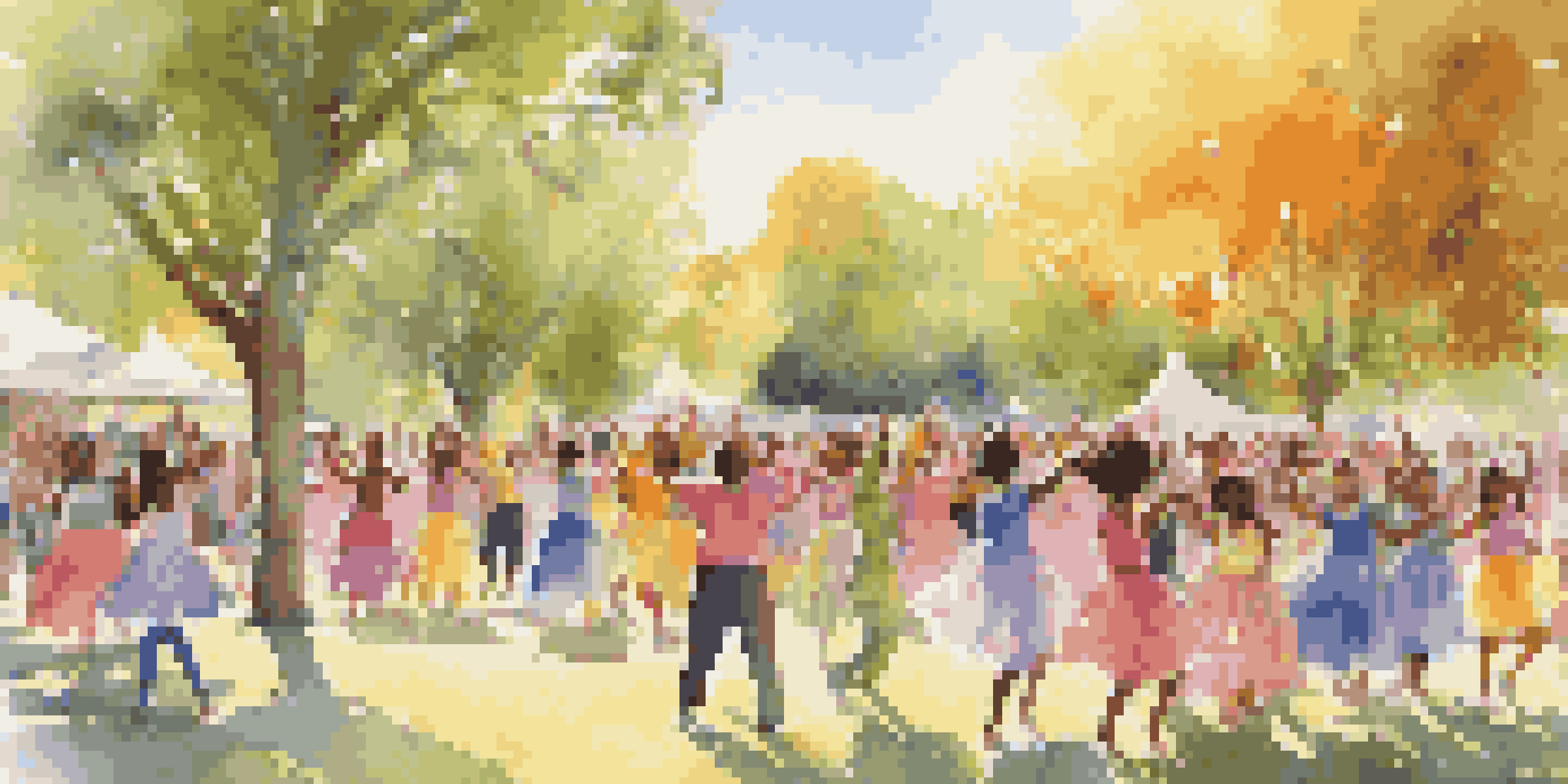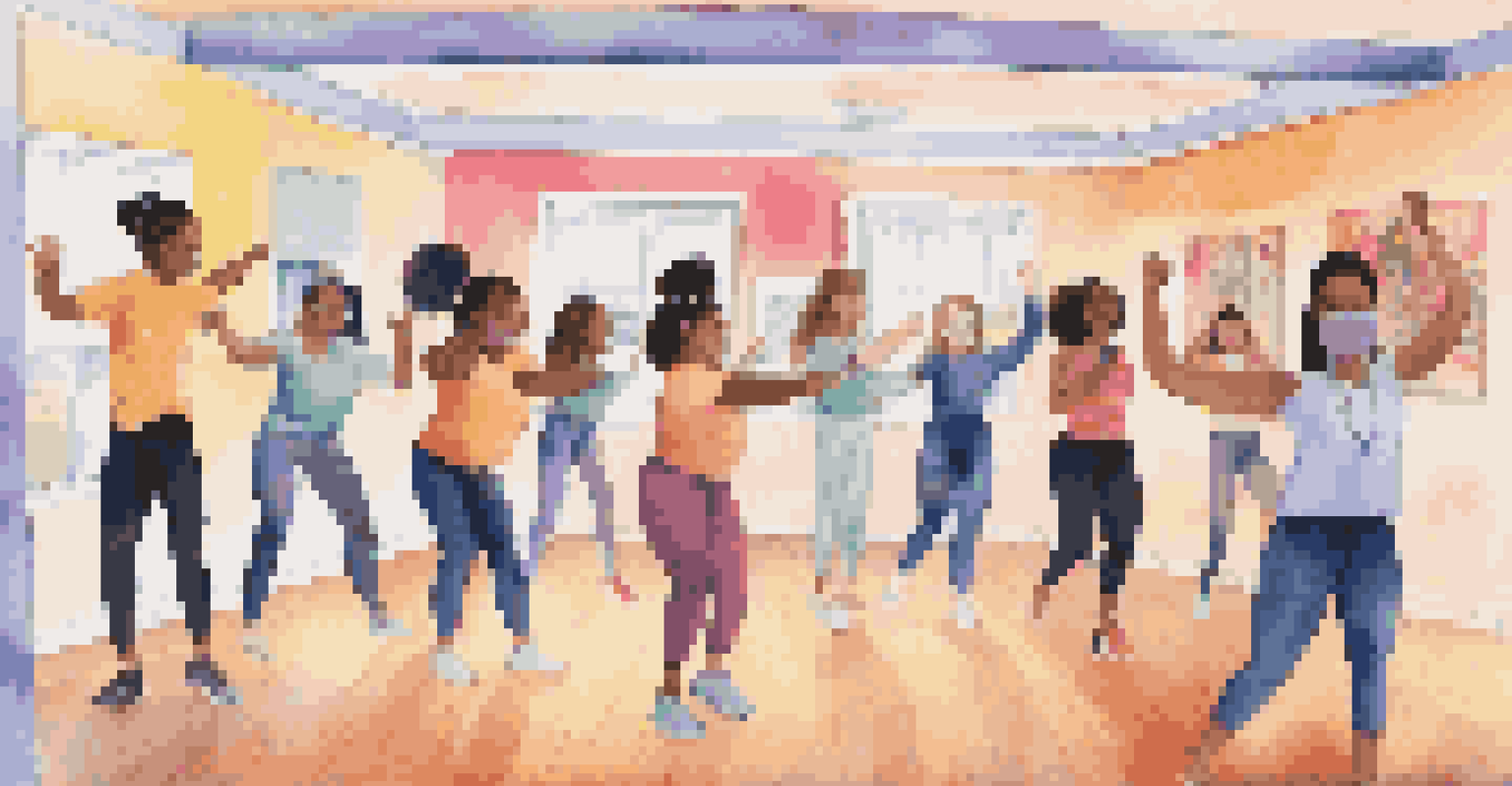The Dance Revolution: Engaging Youth in Community Activities

The Importance of Community Engagement for Youth
Community engagement is crucial for youth development. It helps young people feel connected to their surroundings and fosters a sense of belonging. When youth participate in community activities, they develop essential social skills and build networks that can last a lifetime.
Dance is the hidden language of the soul.
Engaging in community activities can also boost self-esteem and confidence. For example, when a teenager volunteers at a local event, they gain valuable experiences that contribute to their personal growth. This kind of involvement often leads to leadership opportunities in the future.
Moreover, community engagement encourages civic responsibility. By getting involved, youth learn about the importance of giving back and making a positive impact. This foundation helps cultivate informed citizens who will contribute to society in meaningful ways.
How Dance Connects Youth to Their Communities
Dance serves as a universal language that connects people, regardless of age or background. It allows youth to express themselves creatively while also engaging with their peers. Community dance programs can provide a platform for young people to come together and share their diverse stories through movement.

Participating in dance can also foster collaboration and teamwork. When youth join a dance group, they learn to work together towards a common goal, whether it’s preparing for a performance or participating in a community event. This shared experience can lead to lasting friendships and a sense of unity.
Community Engagement Boosts Youth
Active participation in community activities helps youth develop social skills, self-esteem, and a sense of belonging.
Additionally, dance can act as a powerful tool for cultural exchange. Through various dance styles, youth can explore different cultures and traditions, broadening their understanding of the world. This appreciation for diversity enriches their community ties and promotes inclusivity.
Creating Accessible Dance Programs for Youth
To effectively engage youth in dance, it’s essential to create accessible programs. This means offering classes in various styles, levels, and locations to accommodate all skill sets and backgrounds. When dance opportunities are available, more young people can participate and discover their passion for movement.
The arts are a reflection of our society and a catalyst for change.
Incorporating free or low-cost options can also encourage participation. Scholarships or community-funded initiatives can help ensure that financial barriers do not prevent youth from joining. By making dance accessible, communities can inspire the next generation of dancers and leaders.
Moreover, partnerships with local schools and organizations can help promote these programs. By collaborating with educational institutions, communities can reach a wider audience and ensure that dance becomes an integral part of youth engagement strategies.
The Role of Mentorship in Dance Engagement
Mentorship plays a significant role in youth involvement in dance. Experienced dancers can guide and inspire younger participants, providing valuable insights and encouragement. This relationship helps foster a supportive environment where youth feel empowered to explore their talents.
Mentors can also help youth navigate challenges, whether they're technical skills in dance or personal hurdles outside of it. By sharing their own experiences, mentors demonstrate resilience and the importance of perseverance. This guidance can make a lasting impact on a young dancer’s journey.
Dance Fosters Connections and Unity
Through dance, youth can express themselves, collaborate with peers, and explore cultural diversity, strengthening community bonds.
Furthermore, mentorship extends beyond the dance floor. By building connections, mentors can introduce youth to opportunities within the arts and other community sectors. This expanded network can lead to internships, scholarships, and lifelong friendships.
Incorporating Technology in Dance Programs
In today’s digital age, technology can play a pivotal role in dance engagement. Online classes, social media challenges, and virtual competitions can attract youth who are more comfortable with digital platforms. These innovations can make dance more appealing and accessible to a tech-savvy generation.
Using technology also opens doors for creative expression. Youth can create and share their choreography online, allowing for a broader audience and new opportunities for collaboration. This not only enhances their skills but also builds confidence as they showcase their work to the world.
Additionally, technology can facilitate connections between communities. Through virtual events, young dancers from different regions can come together, share their styles, and learn from one another. This global perspective enriches their experiences and fosters a sense of unity.
Showcasing Youth Talent Through Community Events
Community events are a fantastic way to showcase youth talent in dance. Organizing dance showcases or competitions can provide young dancers with a platform to perform and gain visibility. These events not only celebrate their hard work but also inspire others to join in.
In addition to promoting individual talent, these events can strengthen community bonds. They bring together families, friends, and supporters, creating an atmosphere of encouragement and celebration. This sense of community can motivate youth to continue pursuing their passion for dance.
Accessible Dance Programs Inspire Growth
Creating inclusive and affordable dance opportunities encourages youth participation and nurtures the next generation of dancers and leaders.
Moreover, community events can attract local businesses and sponsors, creating opportunities for collaboration. This support can lead to increased resources for dance programs and further engagement in the arts, benefiting the entire community.
The Lasting Impact of Dance on Youth Engagement
The impact of dance on youth engagement is profound and far-reaching. By participating in dance, young people gain not only artistic skills but also critical life skills like discipline, commitment, and teamwork. These experiences prepare them for future challenges, both in and out of dance.
Moreover, dance fosters a sense of belonging and identity. As youth find their place within the dance community, they develop self-confidence and a positive self-image. This foundation is crucial as they navigate the complexities of adolescence and adulthood.

Ultimately, the dance revolution is about more than just movement; it’s about empowering youth and connecting them to their communities. By investing in dance programs, we’re not only nurturing talent but also building a brighter future for our young people and their communities.